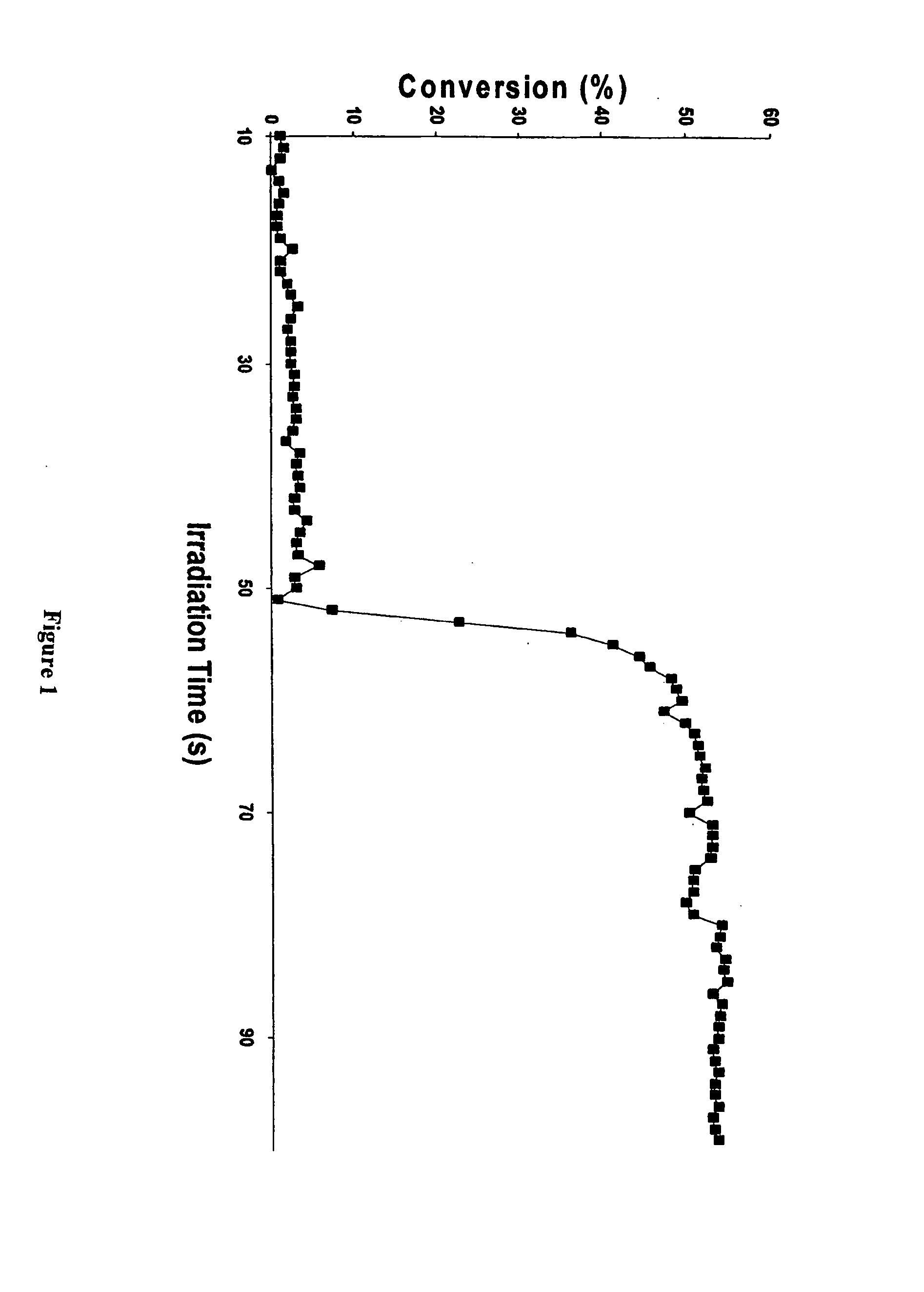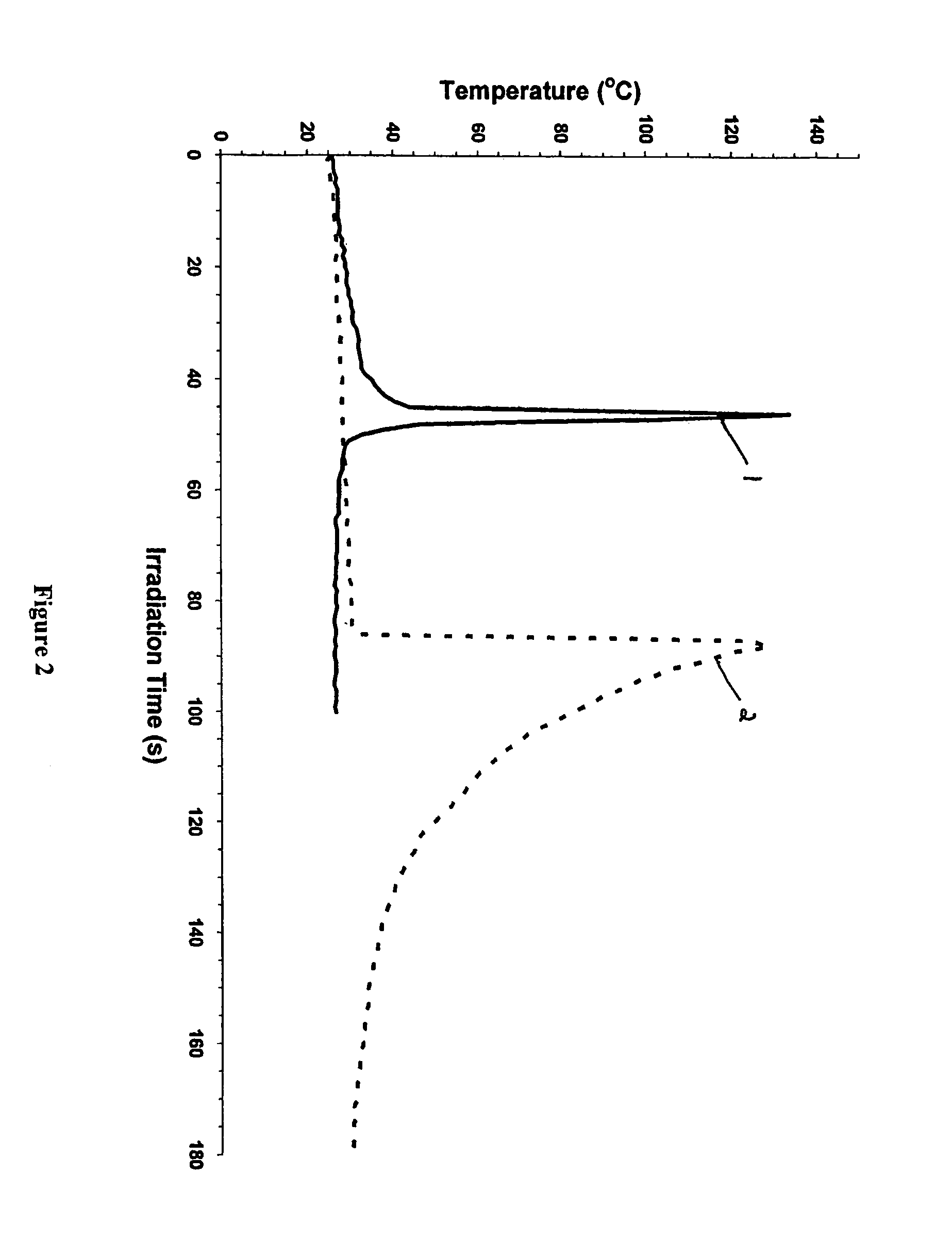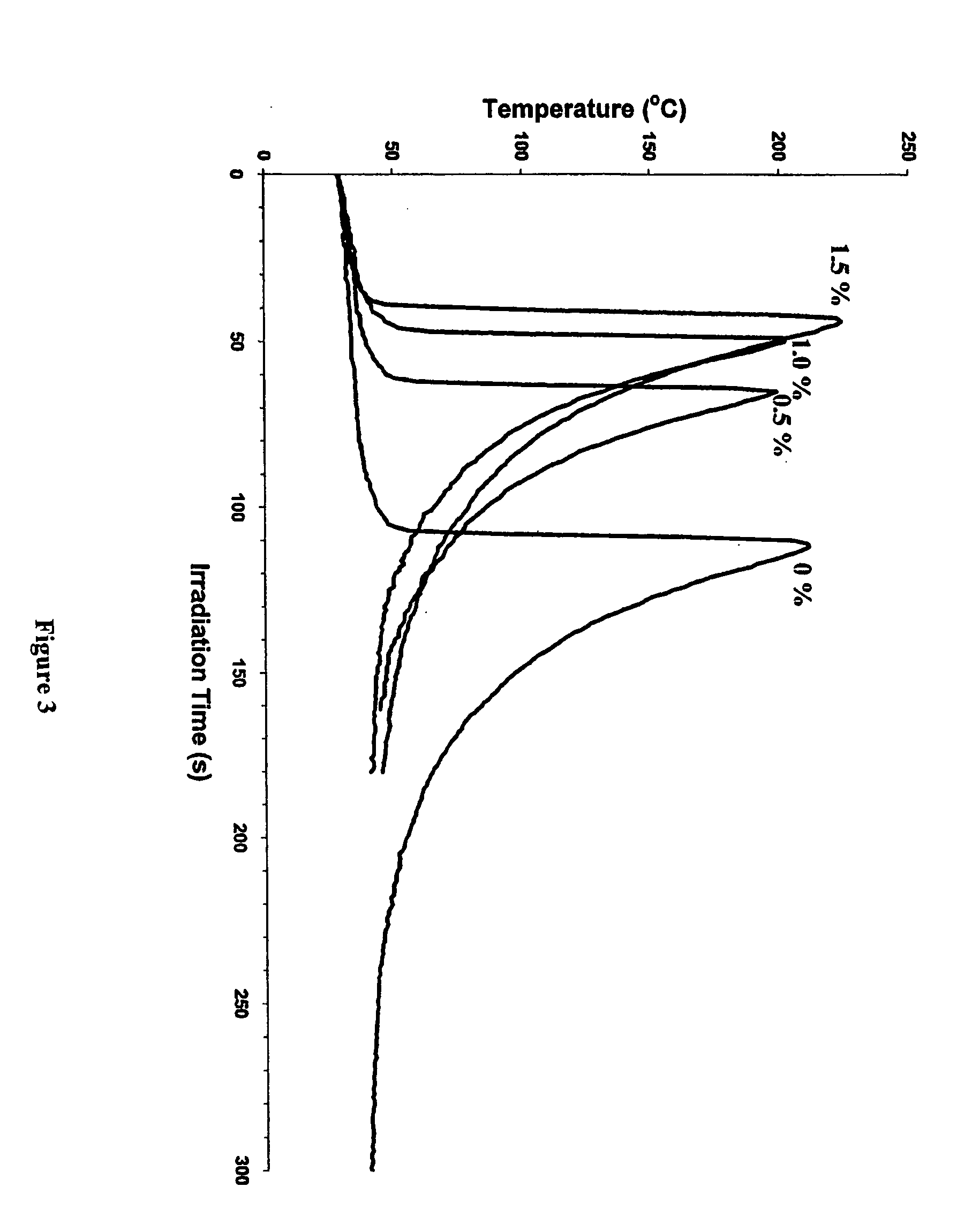Photopolymerizable epoxide and oxetane compositions
a technology of oxetane and epoxide, which is applied in the field of photopolymerizable epoxide and oxetane compositions, can solve the problems of epoxide monomer substrates that are typically expensive, oxetane monomers are not generally useful by themselves, and the use of short irradiation periods is restricted to a relatively small number of applications
- Summary
- Abstract
- Description
- Claims
- Application Information
AI Technical Summary
Benefits of technology
Problems solved by technology
Method used
Image
Examples
example 1
[0054]FIG. 1 depicts a plot of a RTIR study of the photopolymerization of an oxetane monomer, 3-ethyl-3-phenoxymethyloxetane (POX) in accordance with the present invention. In a glass vial fitted with a small magnetic stirrer, there was dissolved 0.1 g of the cationic photoinitiator IOC15 SbF6 in 0.5 g dichloromethane. The solution was irradiated with UV light (light intensity of 500 mJ / cm2 min) for 1 minute with the end of the liquid optic probe of a UVEXS Model SCU-110 mercury arc lamp (Sunnyvale, Calif.) placed near the surface of the solution. After irradiation, the solution was slowly added dropwise to 0.5 g of POX. Delayed polymerization of the monomer was observed which took place exothermically 40 seconds after the addition of the irradiated photoinitiator solution was complete. The product was a light brown gel. Referring to FIG. 1, the photopolymerization of POX displayed a long induction period during which only a very slow conversion to polymer is noted. However, at a gi...
example 2
[0055]FIG. 2 depicts an OP plot of the photopolymerization of an oxetane monomer (POX) in the presence of a cationic photoinitiator and a free radical photoinitiator in accordance with the present invention. The photoinitiator used in this case was IOC-15 SbF6 at a 1.0 mol. % level in POX. Referring to FIG. 2, curve 1 shows the effect of 1 mol % of the free radical photoinitiator 2,2-dimethoxy-2-phenylacetophenone (Irgacure® 651) and the cationic photoinitiator diaryliodonium salt on the polymerization of POX. In the absence of the free radical photoinitiator, the polymerization of POX displays (curve 2) the typically observed extended induction period followed by rapid, autoaccelerated polymerization. However, when Irgacure® 651 is added, photopolymerization proceeds with a similarly very high exothermicity but with a dramatically shortened induction period, i.e. accelerated photopolymerization (curve 1).
example 3
[0056]FIG. 3 depicts a plot of an Optical Pyrometry study of the photoinitiated photopolymerization of a bixoxetane monomer, 1,4-bis[(3-ethyl-3-oxetanylmethoxy)methyl]benzene (XDO), in the presence of 1.0 mol % of the cationic photoinitiator IOC-SbF6 by itself and with varying concentrations of Irgacure® 651 as a free radical photoinitiator in accordance with the present invention. Referring to FIG. 3, the length of the induction period is inversely proportional to the quantity of Irgacure® 651 added. However, the effect seems to be maximum at 1.0 mol % of the free radical photoinitiator (1:1 stoichiometric ratio of free radical and cationic photoinitiators). As expected, a further increase to 1.5 mol % of Irgacure® 651 leads to a small incremental reduction in the induction period. Similar to the results of Example 2, photopolymerization proceeds with a dramatically shortened induction period, i.e. accelerated photopolymerization of the oxetane monomer. Similar results were observe...
PUM
| Property | Measurement | Unit |
|---|---|---|
| Percent by mass | aaaaa | aaaaa |
| Percent by mass | aaaaa | aaaaa |
| Wavelength | aaaaa | aaaaa |
Abstract
Description
Claims
Application Information
 Login to View More
Login to View More - R&D
- Intellectual Property
- Life Sciences
- Materials
- Tech Scout
- Unparalleled Data Quality
- Higher Quality Content
- 60% Fewer Hallucinations
Browse by: Latest US Patents, China's latest patents, Technical Efficacy Thesaurus, Application Domain, Technology Topic, Popular Technical Reports.
© 2025 PatSnap. All rights reserved.Legal|Privacy policy|Modern Slavery Act Transparency Statement|Sitemap|About US| Contact US: help@patsnap.com



